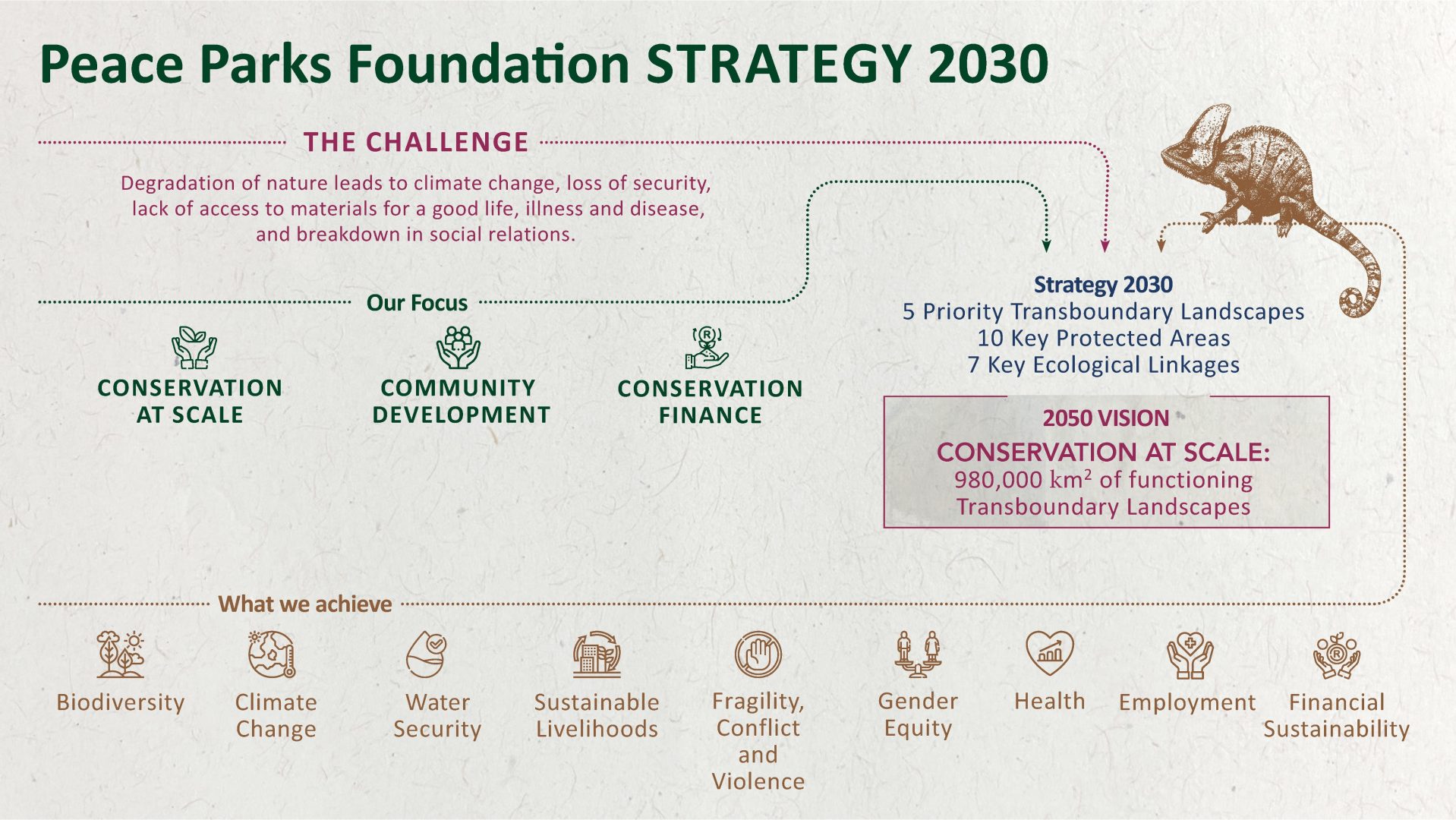STRATEGY 2030
5 Priority Transboundary Landscapes | 10 Key Protected Areas | 7 Key Ecological Linkages
Founded by President Nelson Mandela, Prince Bernhard of the Netherlands and Dr Anton Rupert in 1997 with a mandate to rewild southern Africa, Peace Parks Foundation set out on a mission that became Africa’s largest nature conservation initiative. With an initial focus on bringing Heads of State together to create transboundary landscapes, Peace Parks’ early successes saw the creation of 10 transfrontier conservation areas. This placed an additional 11.3 million hectares of land under conservation.
Peace Parks has evolved over the past 27 years, continuously adapting our role to maximise impact, drawing on valuable lessons learned along the way. We engage in long-term co-management agreements with communities and governments, ensuring local ownership and lasting capacity development, making sure communities are at the heart of decision-making.

Peace Parks Strategy 2030 provides us with a medium-term roadmap and key milestones to achieve our Vision 2050. Our Strategy relies on three pillars to drive positive change across nine impact areas. Together, they guide our interventions and define the impact of our work. They are also crucial to the long-term sustainability of our planet. Peace Parks is currently focusing on enhancing the sustainability and functioning of five priority transboundary landscapes, encompassing 675,990 km². This is being achieved through the protection and professional management of 10 key areas, as well as the restoration of seven ecological linkages connecting them.
Vision 2050
Conservation at Scale
980 000 km2 of well-functioning transboundary landscapes in southern Africa
Over the next 27 years, Peace Parks Foundation’s vision is to secure 18 fully functional transboundary landscapes. These are areas where healthy people live full lives alongside thriving wildlife populations.





